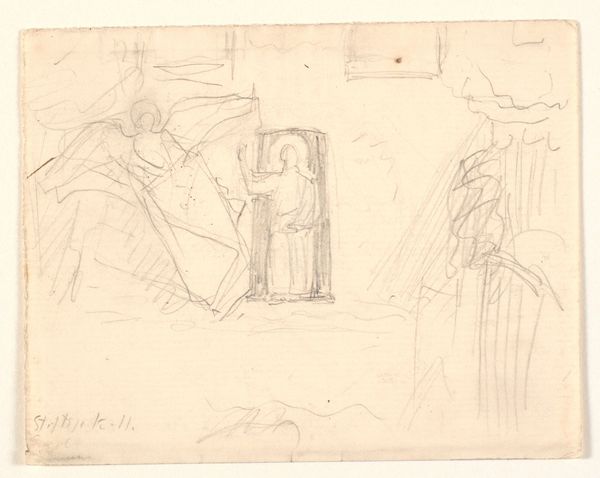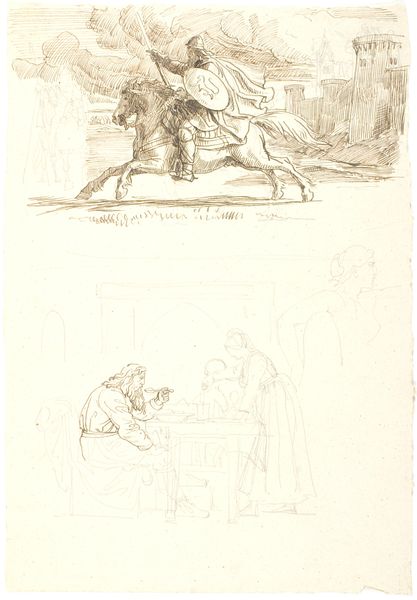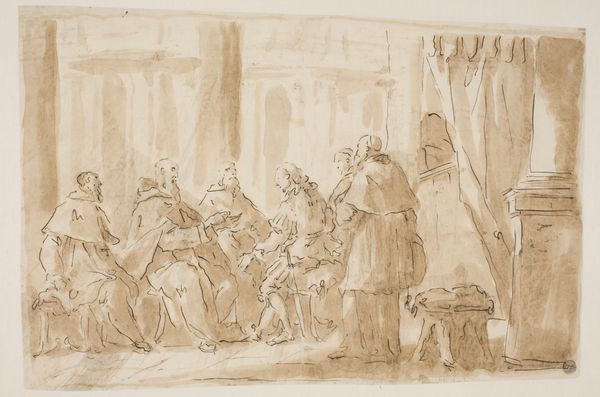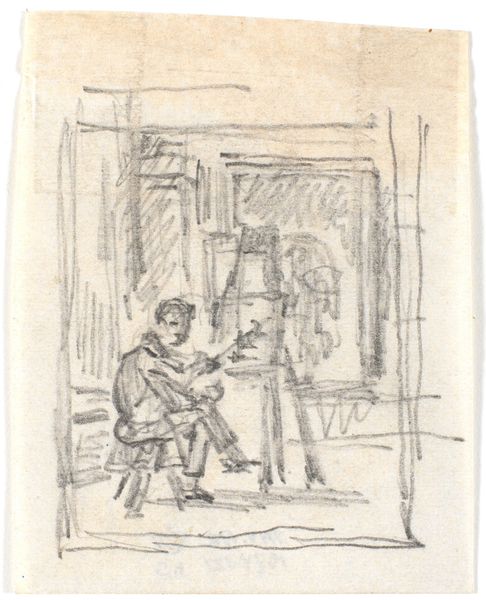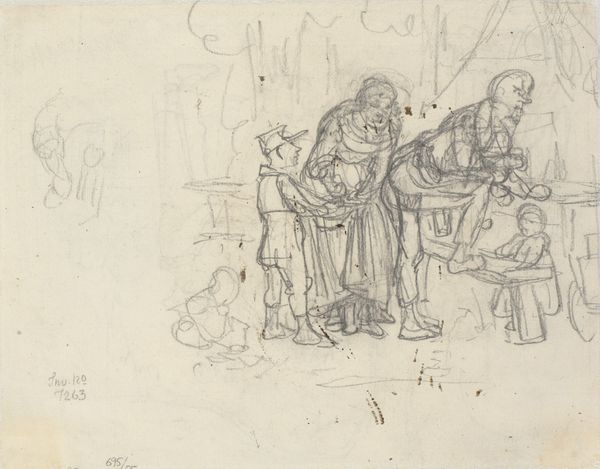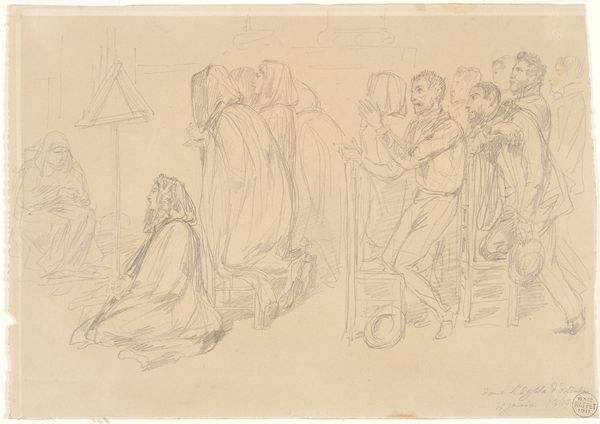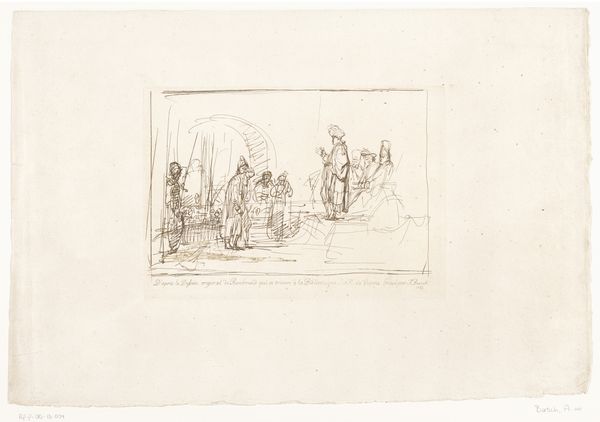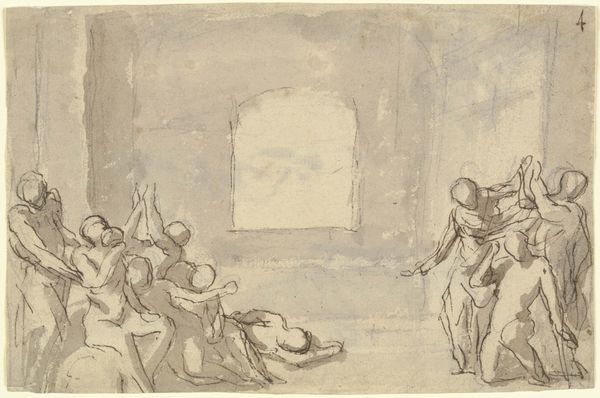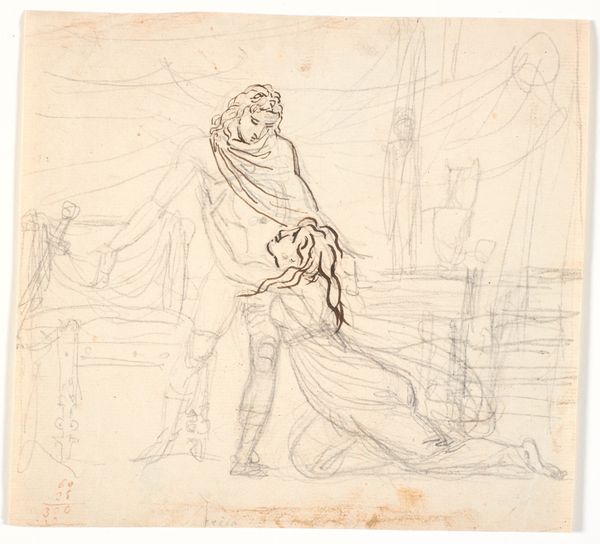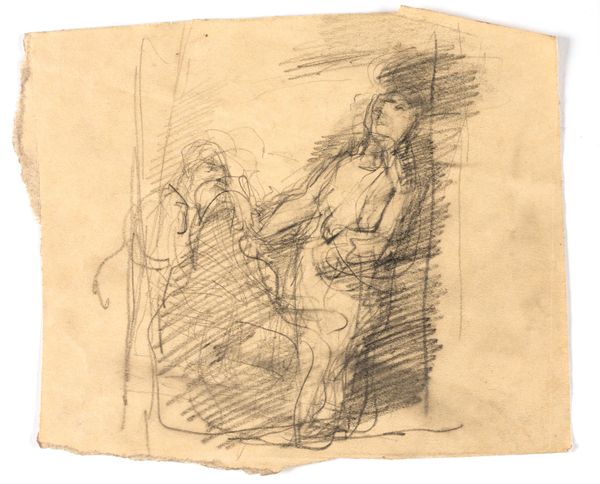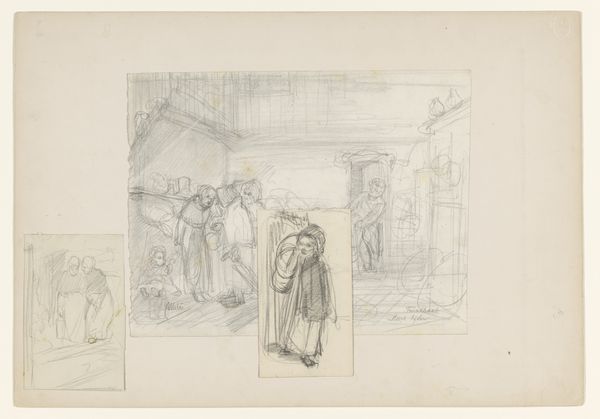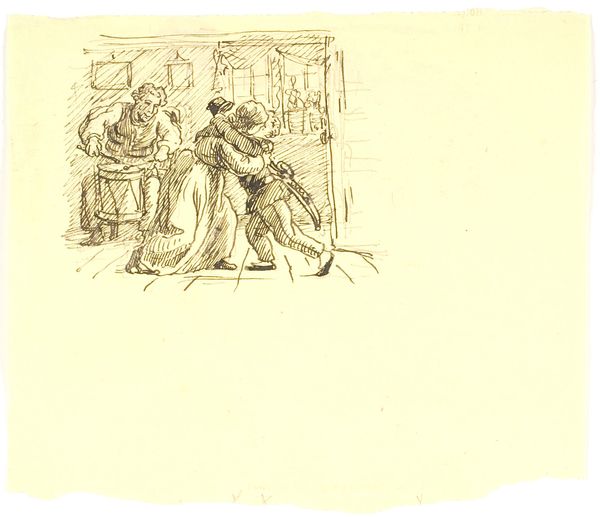
Kompositionsudkast til Kristi grav med de sovende soldater 1847
0:00
0:00
drawing, ink, pencil
#
drawing
#
etching
#
figuration
#
ink
#
pencil
#
history-painting
Dimensions: 171 mm (height) x 105 mm (width) (bladmaal)
Editor: This is a drawing by Martinus Rørbye from 1847, titled "Kompositionsudkast til Kristi grav med de sovende soldater" – a compositional sketch for Christ's tomb with sleeping soldiers. It’s rendered in pencil, ink, and maybe some etching. I’m immediately struck by the contrast between the stillness of the sleeping figures and the suggestion of impending action, and curious about why such a common theme merits a "sketch" by the author. What’s your read on this piece? Curator: Well, considering Rørbye's social and historical context is vital. In 1847, images related to religious events, particularly around the resurrection, were powerful social and political tools. Who commissioned it, where it might have been displayed are questions that could enlighten us. Was Rørbye positioning himself within a specific religious or political movement through this piece? Editor: That's fascinating! I hadn't thought about the socio-political implications. Does the composition itself, with the soldiers depicted both asleep and alert, offer any clues? Curator: Absolutely. Think about the politics of imagery at the time. The sleeping soldiers, a clear sign of human failing in contrast with a central religious belief, challenge authority. Were those ideas palatable to the establishment, or did the artist face any social repercussions? Did the public see the soldier's slumber as laziness, human failure, or just humanity, juxtaposed against divinity? The staging of such scenes would certainly play to his patronage. Editor: So, the image becomes a point of dialogue between the artist, the patrons, and the viewing public. It's amazing how a simple sketch can hold so much historical weight. Curator: Exactly. The image transcends its religious subject matter and enters the public sphere, participating in broader conversations about power, belief, and representation, making visible complex negotiations. It is the museum's responsibility to create and host an enriching engagement with art! Editor: I never considered all the levels art could engage in the social consciousness; I have such a deeper appreciation now. Curator: Indeed. The interplay between artist, artwork, and audience offers unending avenues for discourse, and this sketch gives us insight to history through art.
Comments
No comments
Be the first to comment and join the conversation on the ultimate creative platform.
